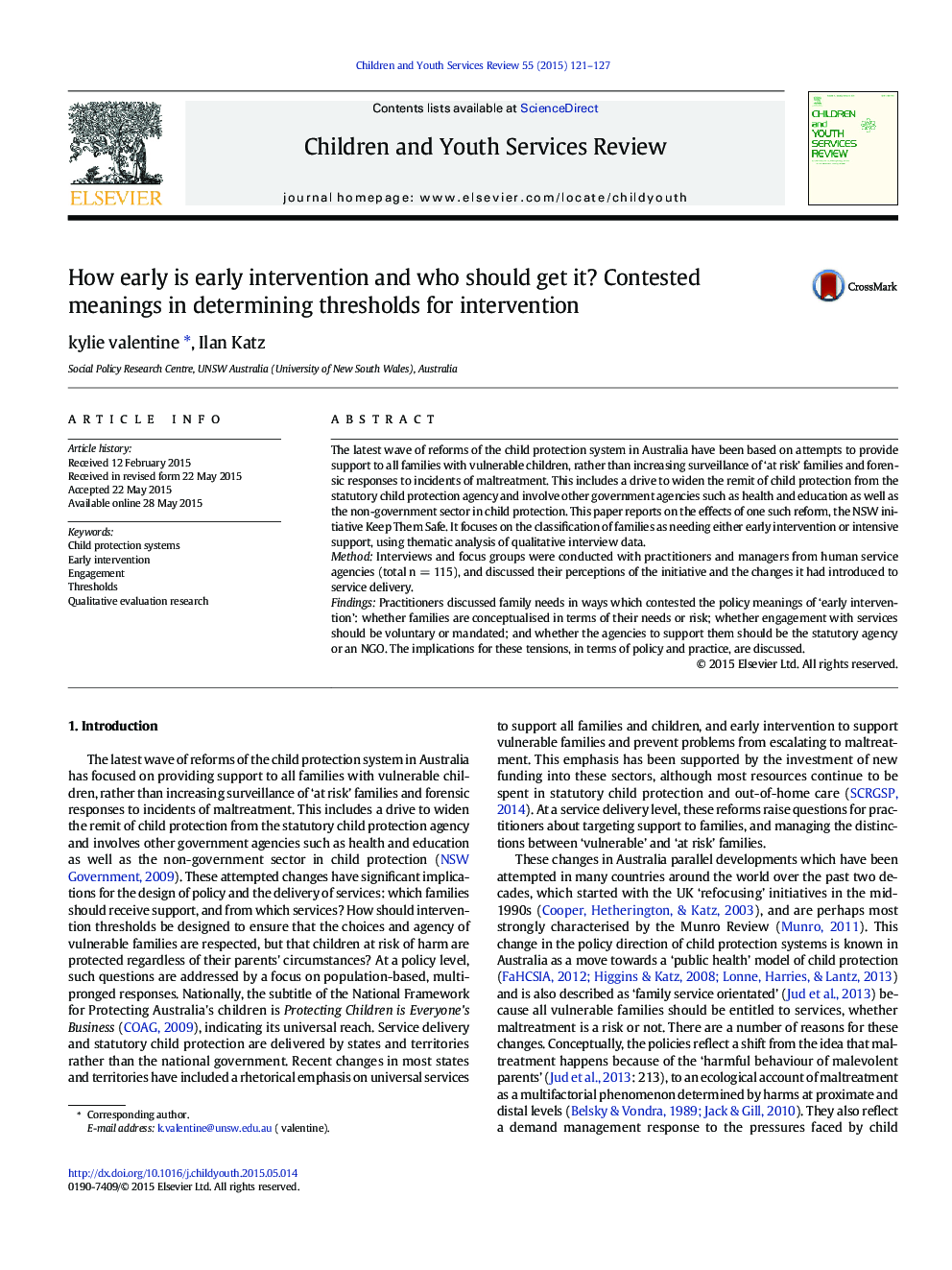| Article ID | Journal | Published Year | Pages | File Type |
|---|---|---|---|---|
| 345967 | Children and Youth Services Review | 2015 | 7 Pages |
•We report on the evaluation of a significant policy reform in NSW, Australia•We conducted interviews and focus groups with 115 staff from a variety of human services agencies•Support for early intervention is widespread, but the meaning of it is contested•Determining levels of risk, and support required, is felt as a significant burden by service providers•Practitioners are active in classifying families; structured decision making tools complement but do not replace judgement•Supportive responses remain challenging for child welfare systems
The latest wave of reforms of the child protection system in Australia have been based on attempts to provide support to all families with vulnerable children, rather than increasing surveillance of ‘at risk’ families and forensic responses to incidents of maltreatment. This includes a drive to widen the remit of child protection from the statutory child protection agency and involve other government agencies such as health and education as well as the non-government sector in child protection. This paper reports on the effects of one such reform, the NSW initiative Keep Them Safe. It focuses on the classification of families as needing either early intervention or intensive support, using thematic analysis of qualitative interview data.MethodInterviews and focus groups were conducted with practitioners and managers from human service agencies (total n = 115), and discussed their perceptions of the initiative and the changes it had introduced to service delivery.FindingsPractitioners discussed family needs in ways which contested the policy meanings of ‘early intervention’: whether families are conceptualised in terms of their needs or risk; whether engagement with services should be voluntary or mandated; and whether the agencies to support them should be the statutory agency or an NGO. The implications for these tensions, in terms of policy and practice, are discussed.
